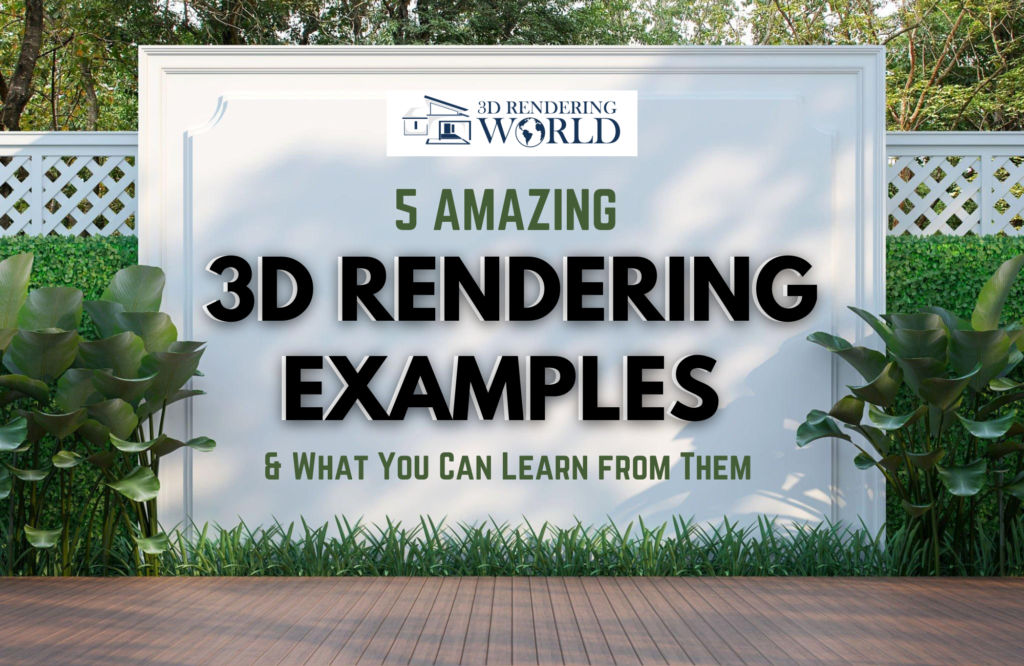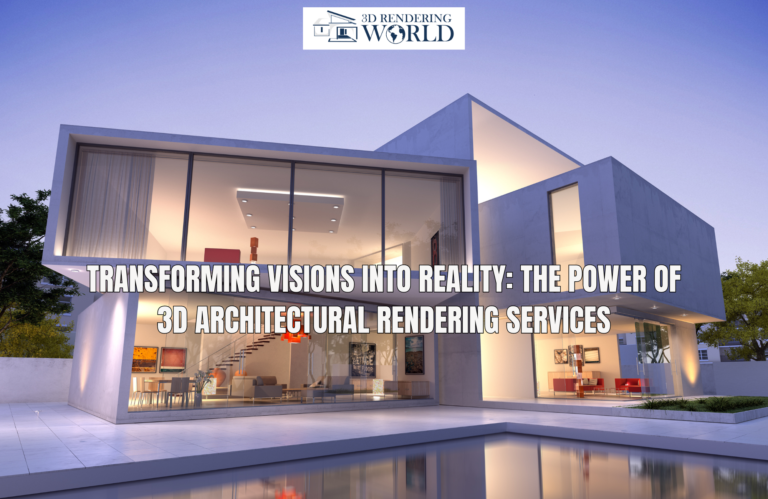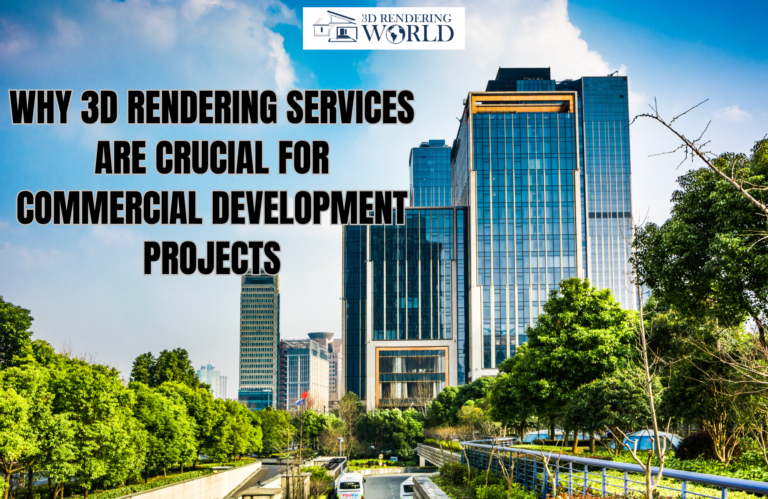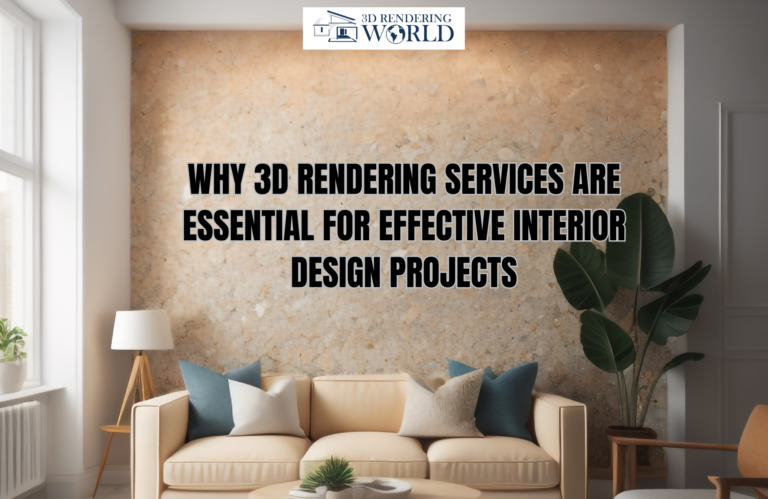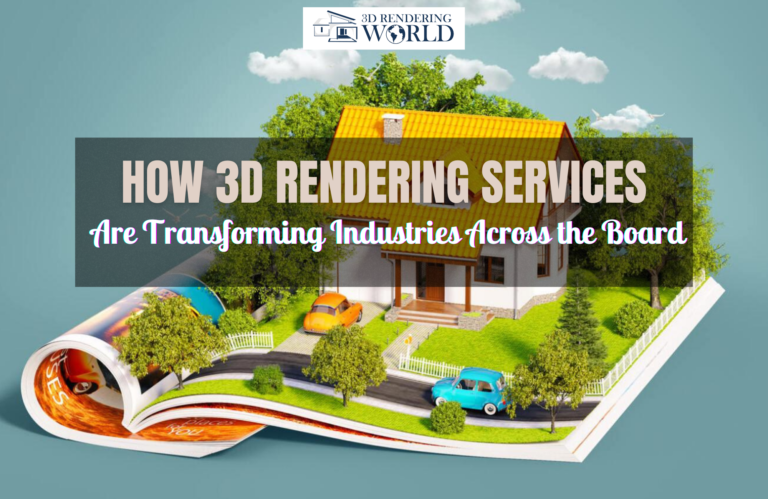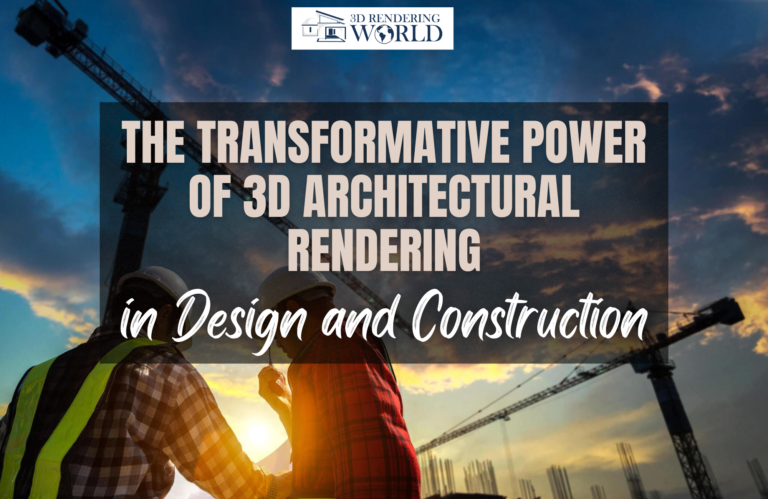Introduction
If you’re not familiar with 3D rendering, it’s the process of generating 3D digital imagery from models using specialized software. The images and animations created can range from product visualizations to full 3D environments. In this post, I’ll highlight 5 stunning examples of 3D rendering and the lessons you can take away to implement in your own projects.
Architectural Visualization

One of the most common uses of 3D rendering services is creating architectural visualizations. Architects use 3D modeling and rendering software like 3ds Max, V-Ray, and Lumion to showcase building and interior designs with realistic visuals.
For example, this 3D rendering of a modern house shows the potential of architectural visualization. The high-quality 3D rendering images allow you to see fine exterior details like wood siding, stonework, and landscaping. Inside, you can clearly make out furnishings, floor plans, and interior design elements. The realism achieved is incredibly valuable for presentations to clients.
What you can learn:
- Use of 3D modeling and rendering tools targeted for architecture
- Focus on materials, lighting, and textures for ultra-realistic visuals
- Ability to showcase designs before construction begins
- Clients can better visualize the end result from renders
- Explore interior design and decorating with renders
As you can see, creating architectural visualizations with 3D rendering gives designs an amazing edge. You can bring your architectural visions to life digitally before breaking ground.
Product Rendering

Another popular use of 3D rendering is creating product visualizations for eCommerce or marketing. Using 3D modeling software, designers can render detailed digital prototypes of everything from phones to cars.
For example, this 3D product rendering of a pair of sneakers allows you to inspect every angle in realistic detail. You can clearly see the mesh fabric, rubber soles, and laces as if holding the real pair. The materials and lighting are rendered in Pixar’s RenderMan for first-class realism.
What you can learn:
- Create detailed 3D product models with true-to-life materials
- Realistic lighting and environmental effects enhance the quality
- Ability to showcase products digitally with no physical prototype
- Customers can inspect products closely before purchase
- Use of detailed renders alongside real photos
- Interactive 3D models users can manipulate
For any product-based business, 3D rendering should be in your toolkit. You can test designs digitally and market products in lush detail.
3D Animation

In the world of film and television, 3D animation and rendering are behind visually stunning content from short films to blockbuster movies. Powerful rendering engines like Arnold allow animators to achieve feature film realism with 3D characters and effects.
For instance, in the animated short “Piper”, characters like the baby sandpiper are 3D models brought to life. The photorealistic rendering creates beautiful scenes as if shot with a camera. The charming characters connect emotionally with audiences through the animators’ artistry.
What you can learn:
- Creating appealing 3D models and characters is key
- Animating with rigging, bones, and other techniques
- Realistic movement and effects hinge on physics and particles
- Lighting, shading, and textures make it feel “real”
- Rendering generates the finished, polished footage
- The art of 3D storytelling is limitless
Like major studios, you can leverage 3D animation and rendering to tell vivid stories through film or games. The technology improves constantly, making stunning animation more accessible.
Video Game Environments

3D rendering is vital for crafting immersive game environments that players can freely explore. Game engines like Unreal Engine provide powerful real-time rendering to compute all the 3D graphics and effects on the fly.
For example, in vast open worlds like those in the Grand Theft Auto series, the player can go anywhere. Each building, vehicle, tree, street, and environmental detail must be 3D modeled and rendered seamlessly as you play. It’s an incredible technical achievement.
What you can learn:
- Highly detailed 3D environments are essential for immersion
- Real-time rendering computes lighting, shadows, etc dynamically
- Game engines optimize 3D data for fast performance
- Effects like particles enhance realism dramatically
- Assets are 3D modeled and then imported into the game engine
- Level layouts designed for gameplay and storytelling
Though demanding, real-time 3D rendering empowers developers to create expansive worlds. The technology improves each year, yielding greater realism and scope.
Medical Visualization

The medical field is harnessing 3D rendering technology in incredibly beneficial ways. Detailed 3D anatomical models are generated from patient scan data to aid diagnosis, surgery planning, and medical education.
For example, this striking 3D rendering of the nervous system provides an interactive 3D environment to explore neurological anatomy. Doctors and students can inspect from all angles in vivid detail. The high quality enhances understanding compared to 2D images.
What you can learn:
- Patient scan data is processed into 3D anatomical models
- The software generates interactive visualizations
- Exploration in 3D improves understanding vs 2D
- Assists surgeons in planning for complicated operations
- Provides invaluable hands-on learning for medical students
- Disease understanding improves with detailed biological models
The medical applications of 3D rendering are expanding rapidly. It enables significant improvements in training, diagnosis, surgery, and more. The future looks bright for 3D medical visualization.
Key Takeaways on 3D Rendering
After seeing these varied examples, you can take away several universal lessons:
- Achieving realism starts with high-quality 3D models and environments
- Lighting, materials, and textures all enhance realism
- Interactivity allows users to inspect models from all angles
- Major industries depend on 3D rendering for improved workflows
- The technology constantly evolves, empowering new capabilities
Frequently Asked Questions
The article discusses architectural visualization, product rendering, 3D animation, video game environments, and medical visualization as common uses of 3D rendering.
The article mentions 3ds Max, V-Ray, and Lumion as commonly used 3D rendering software for architectural visualization.
3D rendering allows product companies to create detailed digital prototypes to showcase products visually without needing physical prototypes. It helps market and sell products.
Powerful rendering engines like Arnold allow animators at major studios to achieve photorealistic 3D characters, effects, and environments in animated films.
3D rendering allows video games to have highly detailed environments that players can seamlessly explore, which is key for immersion. Real-time rendering computes the 3D graphics dynamically.
Interactive 3D anatomical models generated from patient scans improve understanding compared to 2D images. They assist planning surgery and provide invaluable hands-on learning.
Key lessons are achieving realism with high-quality models, the importance of lighting/materials, allowing interactivity, and 3D rendering's value across industries.

